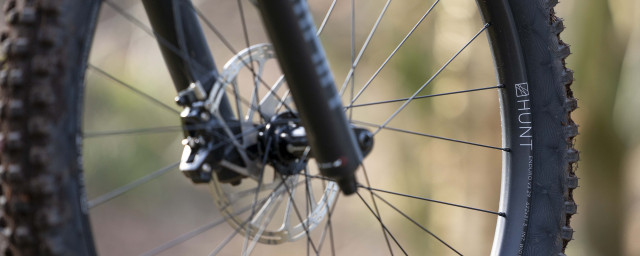Whyte's E-Lyte EVO claims to have the lowest centre of gravity of any e-MTB

With the extra weight of a motor and battery, weight distribution plays a significant role in how an e-MTB handles. Whyte has been experimenting with the drive system layout for a while and now says its latest e-mountain bike, the E-Lyte EVO, carries the lowest centre of gravity of any e-bike.
- E-MTB geometry explained: how weight and geometry affect your ride
- e-MTB items you never knew you needed
- How to store an e-MTB - storage solutions and best practices
The bike bears similarities to the E-Lyte released last year, such as the identical frame. There's a 64.6-degree head tube angle, a 77.1-degree seat tube angle (on a large), and a 450.4mm chainstay. A large frame also benefits from a 481mm reach. That geo is adjustable, slackening the angles by 0.6 of a degree and dropping the BB by 8mm.
Whyte has chosen to equip the E-Lyte EVO with the same suspension figures as the E-Lyte 150, so upfront is 150mm of travel combined with 142mm at the rear. The bike is aimed at trail and enduro riding.
Whyte has added the option to run a 650b or 29-inch wheel at the rear by swapping the shock yoke. And, it runs Bosch's Performance Line CX motor that kicks out a full 85Nm of torque and 600W of peak power.
The motor is powered by a 400Wh integrated battery but can be boosted to 650Wh by installing the PowerMore range extender (included in the asking price).
And that's where things get very interesting as it furthers Whyte's work towards lowering the centre of gravity on its e-MTBs. First seen on the e160 and e180 bikes, that came with motors tilted upwards to allow space for the battery to be lowered in the downtube, the E-Lyte EVO is the next evolution in Whyte's pursuit of the lowest centre of gravity.
In fact, the brand claims that the E-Lyte EVO in its top-of-the-range Stag Worx specification exhibits the lowest centre of gravity found on any e-mountain bike. It says that the E-Lyte EVO's CoG is 37% lower than on bikes that use a more generic battery and motor layout. That's lower than the regular E-Lyte's too, which is said to be 24% lower than the generic layout. Those percentages have been taken with the PowerMore range extender installed.
That has been achieved through two things: the motor and the wheel size. The former is heavier than the Performance Line SX found on the E-Lyte, so there's more mass placed lower in the frame. The latter lowers that mass further.
As for weights, Whyte says that without the PowerMore extender, a medium-size E-Lyte EVO in its Stag Works guise tips the scale at 20.08kg, with inner tubes.
The E-Lyte EVO is available in two builds the RS and the Stag Works with the former donning RockShox suspension with a Lyrik Select+ at the front and a Deluxe Select+ shock. Its driven by SRAM's S1000 AXS T-Type drivetrain and slowed thanks to the same brand's Code Bronze Stealth brakes. It rolls on a set of WTB ST i30 rims wrapped with a Maxxis Minion DHF at the front and a DHR II at the rear with the front donning EXO protection and the rear, EXO+.
The Stag Works bike is the range-topper that features Fox Factory suspension with a 36 fork and a Float X shock. It's kitted with host of Hope components including the brakes, hubs and crankset. Shifting is provided by SRAM's XO AXS T-Type drivetrain and there's a set of DT Swiss HX531 wheels with a Maxxis Assegai EXO+ MaxxGrip at the front and a DHR II Doubledown MaxxTerra at the rear. This Stag Works bike comes with a mullet wheelet as standard.
Whyte has also extended its range of warranties. As usual, bearings are covered for life but now the brand is offering a lifetime frame warranty for the first owner.
Prices start at £7,250 for the Whyte E-Lyte EVO RS and the E-Lyte EVO Stag Works will set you back £10,000.















